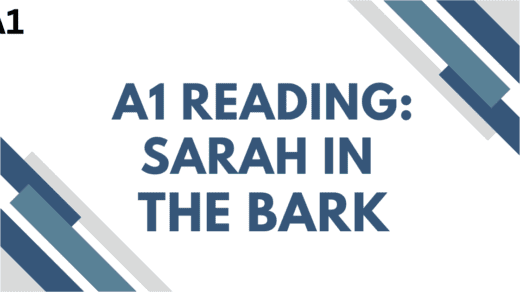Singular and plural nouns are essential to speech in any language, allowing us to name people, places, things, and ideas. One fundamental aspect of nouns is their distinction between singular and plural nouns forms. This lesson will explain the rules for forming singular and plural nouns, providing detailed explanations and examples to clarify these essential concepts.
By the end of this lesson, you will be able to identify and form singular and plural nouns and understand the rules that apply to forming plural nouns.
What are Singular and Plural Nouns?
Singular nouns refer to one individual or object, while plural nouns refer to more than one individual or object. For example:
Singular Nouns
- Definition: A singular noun refers to one person, place, thing, or idea.
- Examples: cat, city, book, love.
- Usage in sentences: “The cat sits on the mat.”
Plural Nouns
- Definition: A plural noun indicates more than one person, place, thing, or idea.
- Examples: cats, cities, books, loves.
- General rule: Adding ‘s’ or ‘es’ to form plurals.
Rules for Forming Plural Nouns:
- Regular Plurals: Generally formed by adding ‘s’ (e.g., dog → dogs).
- Plural with ‘es’: Used for nouns ending in s, x, z, ch, and sh (e.g., bus → buses).
- Nouns ending in ‘y’: Change ‘y’ to ‘i’ and add ‘es’ if preceded by a consonant (e.g., baby → babies); if preceded by a vowel, just add ‘s’ (e.g., key → keys).
- Nouns ending in ‘f’ or ‘fe’: Often change to ‘ves’ (e.g., leaf → leaves).
- Irregular Plurals: Unique plural forms that do not follow standard rules (e.g., man → men, child → children).
Rules for Forming Plural Nouns in Detail:
Adding -s:
The most straightforward way to form plural nouns is by adding “-s” to the end of the singular form. This rule generally applies to most nouns.
Examples:
- Dog → Dogs
- Car → Cars
- Chair → Chairs
Adding -es:
For nouns that end in -s, -x, -z, -sh, or -ch, you typically add “-es” to form the plural.Examples:
- Bus → Buses
- Box → Boxes
- Church → Churches
- Dish → Dishes
Changing -y to -ies:
When a singular noun ends in a consonant followed by “y,” the “y” is changed to “ies” to form the plural.
Examples:
- Party → Parties
- Baby → Babies
- Key → Keys
- Day → Days
However, if the noun ends with a vowel + -y, just add -s:
- Examples:
- Toy → Toys
- Day → Days
Changing -f or -fe to -ves:
Some nouns that end in “f” or “fe” change this ending to “ves” in the plural form.
Examples:
- Leaf → Leaves
- Knife → Knives
- Wolf → Wolves
- Life → Lives
Irregular Plural Nouns:
Some nouns have unique plural forms that do not follow any standard rules. These are known as irregular nouns. Certain nouns rules and must be memorized:
Examples:
- Child → Children
- Man → Men
- Woman → Women
- Mouse → Mice
Nouns That Remain the Same:
Certain nouns do not change at all between singular and plural forms. These typically include some types of animals and collective nouns.
Examples:
- Sheep → Sheep
- Deer → Deer
- Fish → Fish
Collective Nouns:
Some nouns refer to a group of individuals or things and may take singular or plural verbs depending on whether the group is acting as a single unit or as individuals.
Examples:
- The team is winning (singular)
- The team are wearing their new uniforms (plural – focusing on individuals)
Compound Nouns
In compound nouns, the pluralization rules can vary based on the structure of the compound. Typically, you pluralize the most significant word:
Examples:
- Sister-in-law → Sisters-in-law
- Passerby → Passersby
Special Cases and Exceptions
While the rules outlined provide a solid foundation, there are exceptions and special cases to consider:
1. Nouns with Foreign Origins
Some nouns borrowed from other languages retain their original plural forms:
Examples:
- Cactus → Cacti (Latin)
- Octopus → Octopuses or Octopi (Greek; though “octopuses” is more widely accepted in English)
- Criterion → Criteria (Greek)
2. Latin and Greek Nouns
Nouns from Latin and Greek often retain unique pluralization patterns:
Examples:
- Alumnus → Alumni
- Manus → Manuses (though “manus” is often treated as plural)
- Formula → Formulas or Formulae
3. Mass Nouns vs. Count Nouns
Mass nouns, which refer to substances or collective categories that cannot be counted individually, do not have a plural form. Instead, they take singular verbs:
Examples:
- Water – not “waters”
- Furniture – not “furnitures”
- Information – not “informations”
Practice Singular and Plural Nouns
As with any aspect of language, practice is key to mastery. Here are some exercises on Singular and Plural Nouns
Exercise 1: Pluralization Practice
Convert the following singular nouns into their plural forms:
- House
- Baby
- Leaf
- Wolf
- Hero
Answers:
- Houses
- Babies
- Leaves
- Wolves
- Heroes
Exercise 2: Identify the Noun Type
Classify the following nouns as singular or plural:
- Babies
- Tooth
- Women
- Dogs
- Mice
Answers:
- Plural
- Singular
- Plural
- Plural
- Singular
Conclusion
Understanding the rules governing singular and plural nouns is crucial for achieving clarity and precision in communication. From regular pluralization practices to recognizing irregular forms and exceptions, mastering these nuances will significantly enhance both your spoken and written language skills. You can expand on each subsection with examples, explanations, and practice exercises to reach your word count goal.




